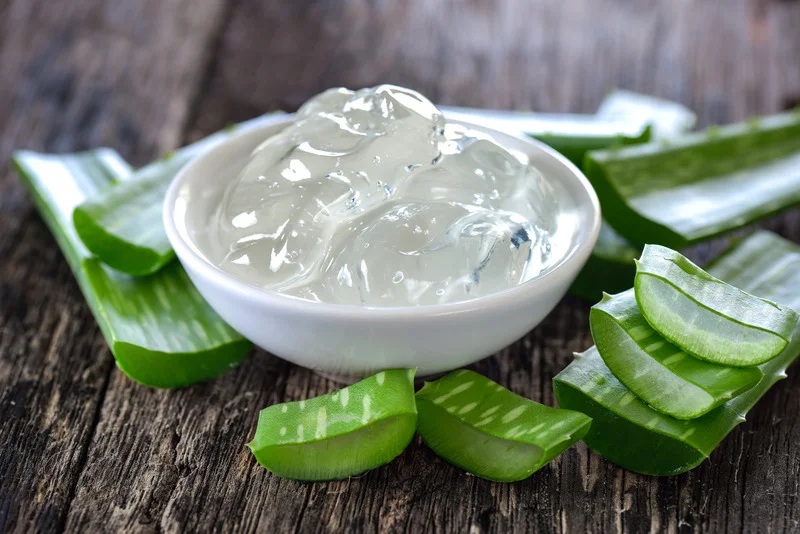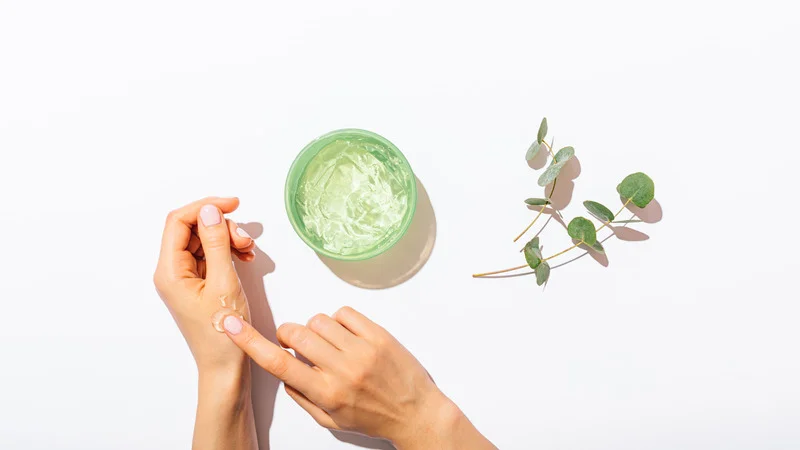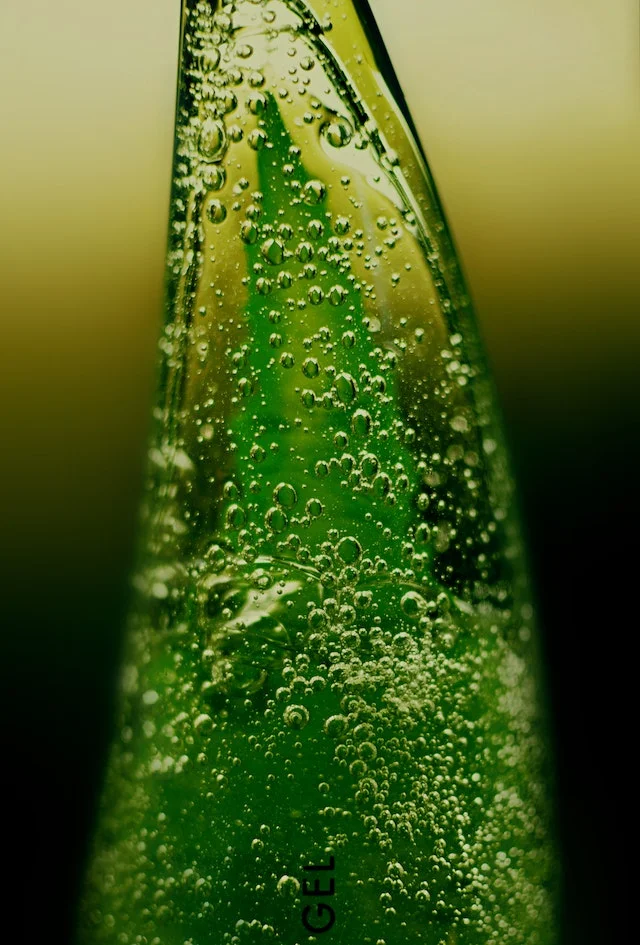Aloe vera gel has become a popular home item, thanks to its soothing and therapeutic effects. This natural gel derived from the aloe vera plant is widely used to cure sunburn, small wounds, dry skin, and hair. But does aloe vera gel expire?

Does Aloe Vera Gel Expire?
When properly stored, an unopened bottle of 100% pure aloe vera gel can last up to 12 months after its manufacturing date. This shelf life is for concentrated aloe gel, not dry aloe vera powder.
Once opened, aloe vera gel can last up to 6 months before expiring and becoming possibly unsafe to use. This period is highly dependent on storage conditions. Proper refrigeration and airtight containers help to preserve freshness.
How Long Does Unopened Aloe Vera Gel Last?
Unopened, store-bought aloe vera gel generally lasts:
- 12-18 months past the printed expiration date when refrigerated.
- 6-12 months when stored at room temperature away from heat and light.
Refrigeration is ideal for maintaining freshness and preventing oxidation.

How Long Does Aloe Vera Gel Last Once Opened?
To get the most out of an aloe vera gel and keep it safe, use it up within six months after opening the container and keeping it in the fridge. Within this timeframe, its vitamins, minerals, and acemannan compounds should remain stable. However, even after beyond this mark, many people report that it still has calming properties and has no negative effects when used on skin.
Some methods for extending the life of open gel include just taking out what you need at a time, sealing it airtight between applications, and inspecting for fuzziness as a sign of over-aging before each application. Older aloe is usually safe to use as long as it smells and appears natural.
What Does Expired Aloe Vera Gel Look Like?
Changes in consistency, fragrance, or look are the most evident signs that an aloe gel has reached its end of life.
- Thickening/gel formation: Fresh aloe has a thin, liquid consistency. As it ages, the gel may solidify into a stiffer, jelly-like consistency.
- Discoloration: Aloe is often clear or pale green. Discoloration, such as yellowing or browning, shows degeneration.
- Odd odor: A fresh aloe aroma should be pleasantly herbaceous. Strange scents, such as sourness or ammonia, indicate that the substance has lost its efficacy.
- Mold growth: If fuzzy or other visible molds arise, destroy the gel because toxins may have formed.
- Bubbles or separation: The separation of liquid and solid layers is another bad flag.

How Do You Know If Aloe Vera Gel Is Expired?
Aside from visual and olfactory signals, the efficacy of aloe vera gel can be determined by performing a patch test on a small area of your skin. If you experience irritation or notice any negative responses, it’s time to say goodbye to your outdated gel.
Color And Look
Fresh aloe vera gel usually has a clear to pale green color. If you notice the gel has changed to yellow, brown, or looks cloudy, it probably means it’s expired.
Smell
Aloe vera gel has this nice, light, natural scent to it. If your aloe vera gel has a bad or sour smell, it probably means it’s gone bad or fermented.
Texture
A properly preserved aloe vera gel should be smooth and gel-like. If your aloe vera gel turns watery, lumpy, slimy, or stringy, it has lost moisture or grown mold or germs.
What Affects the Expiry Date of Aloe Vera Gel?
Several factors influences how quickly aloe fades and loses effectiveness:
- Heat exposure: Direct sunshine or temperatures above 77°F significantly accelerate rancidity.
- Oxygen contact: Sealed packaging prevents oxidation, whereas exposed gel metabolizes faster.
- Moisture: Excess humidity promotes microbiological activity in the product.
- Processing methods: Dehydrated, freeze-dried, or living gel retains properties longer than juices or extracts.
- Storage conditions: Cool, dark areas, such as the refrigerator, slow catabolism most effectively between 40 and 45°F.
Can I Still Use Expired Aloe Vera Gel?
While aloe that has passed its expiration date has lower antioxidant levels on a biochemical scale, visual changes are usually what determine if it is still safe to use. So long as:
- Contains no mold, weird odors, or textures
- Feels and appears mostly normal
- Causes no skin responses or irritation.
It is typically considered safe from danger. The benefits may not be maximized, but calming properties often last beyond “expiration” for most topical therapies. Simply monitor your own experience.
As a precaution, avoid consuming expired aloe or gels that exhibit visible deterioration.
What Happens If I Use Expired Aloe Vera Gel on Skin?
Using expired aloe vera gel might cause a variety of skin problems. Some people may not notice any problems right away, but products that have gone bad can still contain bacteria or mold that can cause skin illnesses or irritation. Signs may include:
- Redness or rash: Expired components may irritate your skin.
- Breakouts: Bacteria from ruined gel can block pores, causing acne.
If you mistakenly apply expired aloe vera gel to your skin, wash it off right away and keep an eye out for any unexpected responses.

How Do You Keep Aloe Vera Gel for a Long Time?
To keep aloe vera gel from expiring too quickly, follow these storage tips:
- Store in the fridge, a cool pantry or cabinet after opening to slow bacteria growth.
- Transfer gel into an airtight, opaque container to block air and light.
- To avoid contamination, scoop out the gel with clean tools rather than your fingers.
- Only decant what is required to avoid frequent openings.
- Apply gel only to clean skin, and do not double dip.
- To achieve the optimum potency, use the gel within 6 months of opening.
Proper refrigeration and airtight storage enhance the shelf life. Remember, even with the greatest storage conditions, unsealed aloe vera gel should be used within 6 months.
How to Store and Use Aloe Vera Gel Properly?
The simplest method for keeping aloe vera gel is to freeze it overnight in ice cube trays and then freeze the cubes for up to a year.
Keep It Cool
Natural enzymatic processes and regular microbes on the plant cause the gel to disintegrate very immediately. The moderate temperatures limit the deterioration process, preventing bacterial growth and preserving the gel’s efficacy. So, keeping your aloe vera gel in a cool environment might considerably increase its shelf life. Avoid keeping it in the car or in direct sunlight.
Use an Airtight Container
When you’ve opened a jar of aloe vera gel, make sure to seal it thoroughly. Exposure to air can cause oxidation, which alters the gel’s consistency and reduces its efficiency. An airtight container acts as a protective barrier, keeping out both air and bacteria.
Lightproof It Using Non-clear Containers
Light, particularly intense sunshine, may break down the healing components in aloe vera gel. Choose opaque or dark-colored containers to prevent them from light exposure, which might induce chemical changes.
Freeze the Gel Into Ice Cubes
For long-term storage, freezing is an excellent choice. Place the gel in ice cube trays, freeze, and then transfer the cubes to a freezer bag. This ensures that portions are easily available whenever needed.
Cut Off The Leaf And Cut The Meat Into Cubes
If you happen to have an aloe vera plant, you may freeze the fresh gel straight. Simply clip a leaf, remove the gel, cube it, and freeze it. This process maintains the purest form of aloe vera.
DIY Aloe Vera Gel
Make your own using fresh aloe leaves:
- Cut leaves from a live aloe vera plant.
- Remove the outer rind to access the clear inner gel.
- Blend or process to extract the liquid gel.
- Use immediately or store in a sealed container in the fridge.
Fresh aloe gel made from scratch lasts 1-2 weeks refrigerated.
Pay attention to signs of aging in purchased or homemade aloe gels. With proper storage, the soothing gel can retain its beneficial properties for well over a year.

Conclusion
Aloe vera is a wonderful, natural soothing gel, but it does have a shelf life. However, with a little TLC and an understanding of its shelf life, you can make the most of this green buddy. Stay mindful, appreciate the freshness, and let your skin benefit from the revitalizing properties of aloe vera gel!
FAQs
If you do have a jar or tube of aloe vera that is past its expiration date, then unfortunately the gel should not be used. Instead dispose of it properly and purchase a fresh container of aloe vera gel from a reputable supplier instead.
Signs of expired aloe vera gel include odd smell, change in texture, and cloudiness caused by mold or bacteria. Aloe vera gel can be used for various skin conditions, moisturizing, and relieving symptoms of some digestive issues.
How long aloe vera can be stored depends on the method you choose to use. In general, it can last for 2-3 weeks in the fridge as a whole leaf, gel, or cubes, and 6 months or more in the freezer.
If you store aloe vera leaves at room temperature without added protection, the leaves will lose their usual green color and begin to spoil. It can also happen inside the freezer if your plastic wrap has a loose end. Aloe vera leaves forms a rusty brown callus sealing itself, which is their way of preserving the gel.
Sources:
- 1 Best Guide: How to Know if Aloe Vera Gel Is Expired? — All About Aloe Vera
- Keep Your Aloe Vera Gel Fresh For Longer: 5 Storage Tips + When To Toss It
- How Long Does Aloe Vera Last?
- Does Aloe Vera Go Bad?
- Can I Use Expired Aloe Vera Gel on Sunburn?
- Unveiling the Mystery: Does Aloe Vera Gel Expire? Find Out Here! — All About Aloe Vera
- Does Aloe Vera Gel Expire? Discover the Truth About Its Shelf Life
- How Long Until Aloe Vera Powder Expires?
- How Can You Tell if Aloe Vera is Expired?
- How long does Aloe Vera juice last?
- 13 Effective Uses & Benefits of Aloe Vera!
- Does Aloe Vera Gel Expire? (Types/Shelf-life FAQs)
- Can I use Expired Aloe Vera Gel on my Face?
- Does aloe vera gel expire? Practical ways to store it